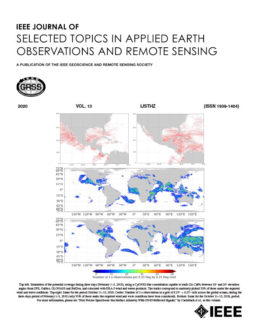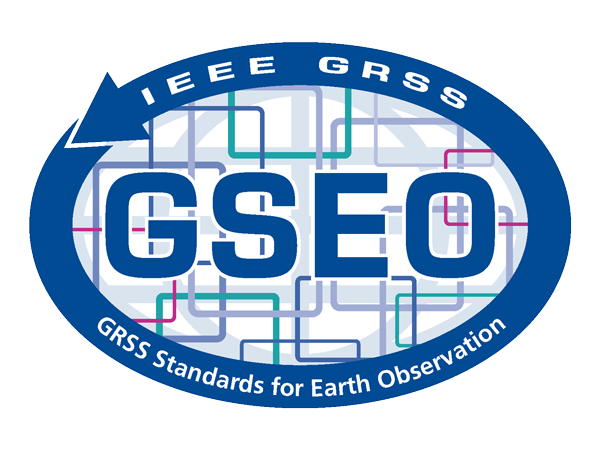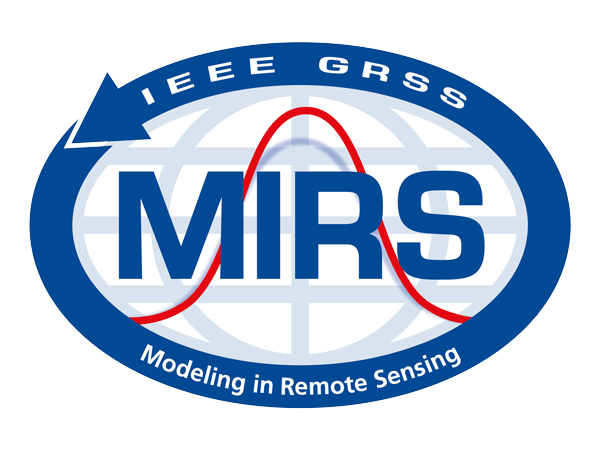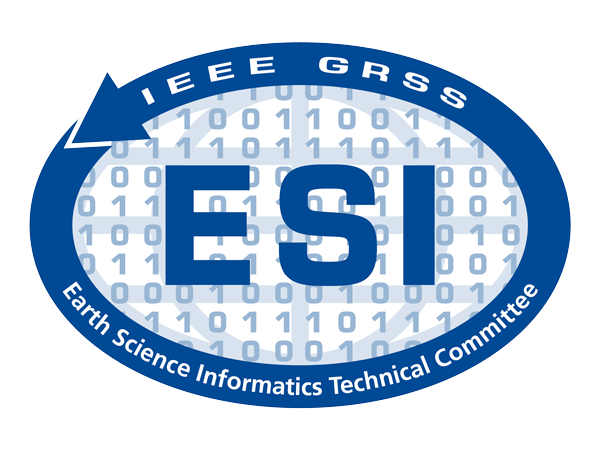


The IEEE Geoscience and Remote Sensing Society (GRSS) is announcing the Fourth GRSS Student Grand Challenge (SGC) which will allow student teams to develop image processing and classification techniques for detection and tracking of whales using spaceborne remote sensing data.
- Fourth IEEE GRSS Student Grand Challenge
- Important Dates
- Application and Selection Process
- Proposals in the Fourth Student Grand Challenge
- Winners in the Fourth Student Grand Challenge
- Previous IEEE GRSS Student Grand Challenges
- Contact Us
Fourth IEEE GRSS Student Grand Challenge
IEEE GRSS is an international professional Society that seeks to engage students and young professionals in contributing to the solution of complex engineering problems within the scope of the Student Grand Challenges. IEEE GRSS has in the past sponsored three previous Student Grand Challenges related to remote sensing based on drones or remotely piloted aircraft systems, nanosatellites payloads, and marine plastic litter monitoring.
Important Dates
October 16, 2023 | Call for Proposals released on GRSS website | |
November 15, 2023 | Deadline for Submission Proposals | |
December 15, 2023 | Announcement and notification of participants | |
January 2024 | All teams present their projects for feedback | |
April 2024 | Preliminary Design Review | |
October 2024 | Critical Design Review | |
December 2024 – January 2025 | Submission of IGARSS 2025 extended abstracts | |
May 2025 | Final Design Review and Submission of IGARSS 2025 Final Papers | |
August 2025 | Attendance of IGARSS 2025 | |
October 2025 | Full Paper Submission to JSTARS |
Application and Selection Process
Teams willing to participate must send a brief description of their mission concept (< 10 pages), indicating:
Team’s composition (5-10 members and an endorsing professor), background and expertise, motivation, and signed commitment letter for the whole duration of the project (see below).
Scientific rationale and feasibility of the proposed innovative techniques (i.e. “ways to conduct the observations and detect the whales”) are welcome.
Development plan, including testing, during the whole duration of the project (1.5 years), compliant with the challenge timeline shown below.
Budget proposal: Budget can be higher, but the GRSS request is limited to USD $8,000. Eligible expenses may include AWS computational resources, and purchase of one computer.
If the proposing team is not yet part of an already established GRSS Student Branch Chapter, it is important that they commit to form a new Chapter by the end of 2024.
The proposing team must commit to attending 30-minute weekly meetings in order to provide status updates and receive management and technical input from GRSS.
A travel grant of up to USD $2,000 will be provided to one person per winning team to present their results at a special session at IGARSS 2025 in Brisbane, Australia.
Teams will be invited to submit their research work to JSTARS where their work will undergo the standard review process. Publication fees will be covered by GRSS in case of paper acceptance.
Teams are invited to submit their proposals before November 15, 2023, to: ieee.grss.4sgc@gmail.com indicating in the subject [4th GRSS Student Grand Challenge]. Proposals will be evaluated by the IEEE/GRSS SGC Steering Committee formed by Prof. A. Camps (UPC-Barcelona Tech, Spain), Prof. P. Gamba (U. Pavia, Italy), Dr. D. Kunkee (The Aerospace Corporation, USA), and Dr. T. Wang (JPL). Results will be announced on the GRSS website and by email to the participants by December 15, 2023.
Notes:
The IGARSS travel grant and the JSTARS publication fees waiver will be in addition to the USD $8,000, but are provided only to teams that commit to the project, attend the progress meetings regularly, and perform successfully.
All teams will retain all IP of their developments.
Teams that may not be familiar with some of the above terms are invited to check, for example: www.smartsheet.com/content/design-review-checklist-templates
Accepted proposals will be announced in late December 2023.
Winners in the Fourth Student Grand Challenge
1. Project title: Developing Image Processing and Image Classification Techniques for Detection and Tracking of Whales using Spaceborne Remote Sensing
Institution: Government Engineering College, Raipur(C.G), India
Endorsing professor: Dr. R. H. Talwekar
2. Project title: Enhancing Whale Tracking: Developing a Comprehensive Whale Detection Model using Satellite Imagery
Institution: University of Chinese Academy of Sciences, Huairou District, Beijing, China
Endorsing professor: Prof. Guoqing Li
3. Project title: Detection and Monitoring Whales Population and Migration from VHR Satellite Images using YOLOv8 Algorithm and Satellite Images Timestamp on a Mini-Computer
Institution: Telkom University, Bandung Regency, West Java, Indonesia
Endorsing professor: Prof. Edwar, S.T., M.T.
4. Project title: Image processing and classification techniques for detection and tracking of whales using space-borne remote sensing data
Institution: Velagapudi Ramakrishna Siddhartha Engineering College, Vijayawada, Andhra Pradesh, India
Endorsing professor: Prof. Dr S. Vasavi
5. Project title: Monitoring humpback whales in Colombia using Satellite Imagery
Institution: Universidad Distrital Francisco José de Caldas, Bogotá Colombia
Endorsing professor: Dr. Javier Medina and Dr. Erika Sofia Upegui Cardona
Previous IEEE GRSS Student Grand Challenges
IEEE GRSS is an international professional IEEE Technical Society that seeks to engage students and young professionals in contributing to the solution of complex engineering problems within the scope of the Student Grand Challenges. IEEE GRSS has sponsored three previous Student Grand Challenges.
The First GRSS Student Grand Challenge focused on the development of end-to-end remote sensing applications based on drones or remotely piloted aircraft systems. Five student teams were selected. Projects included a surveillance system for forest fire detection, a precision agriculture and forest monitoring system, a rice farm mapping system, a system to detect and geolocate disaster survivors, and a system to monitor glaciers. These projects were invited to present their results at IGARSS 2019 in Yokohama, Japan, in a dedicated session:
www.igarss2019.org/Papers/PublicSessionIndex3.asp?Sessionid=1375.








The Second GRSS Student Grand Challenge aimed at developing Earth Observation payloads for nanosatellites. This challenge was conducted in collaboration with the National Space Science and Technology Center (NSSTC), Al Ain, United Arab Emirates (UAE). Three student teams were selected from Spain, Indonesia, and Japan. These payloads included an L-band microwave radiometer, a hyperspectral camera, an IoT communications system, an RGB camera with an AI system to discard images covered by clouds. The satellite launch is now scheduled for the second half of 2024. The 3-unit CubeSat and the 3 payloads developed were presented at IGARSS 2023 in Pasadena, USA:
2023.ieeeigarss.org/view_session.php?SessionID=1464 2023.ieeeigarss.org/view_session.php?SessionID=1465




The Third GRSS Student Grand Challenge targeted the detection of marine plastic litter. This challenge was conducted in collaboration with the Van Allen Foundation of the Université de Montpellier (France). Four student teams were selected from France, Spain, Portugal, and the US, using a number of different techniques from GNSS-R to hyperspectral imaging, optical radiometry and lidar fluorescence. Preliminary results were presented by one of the teams at IGARSS 2023 in Pasadena, USA:
Questions and more information
If you have any questions about the IEEE GRSS Student Grand Challenges, please email ieee.grss.4sgc@gmail.com.
Submissions will only be accepted by email via ieee.grss.4sgc@gmail.com.























